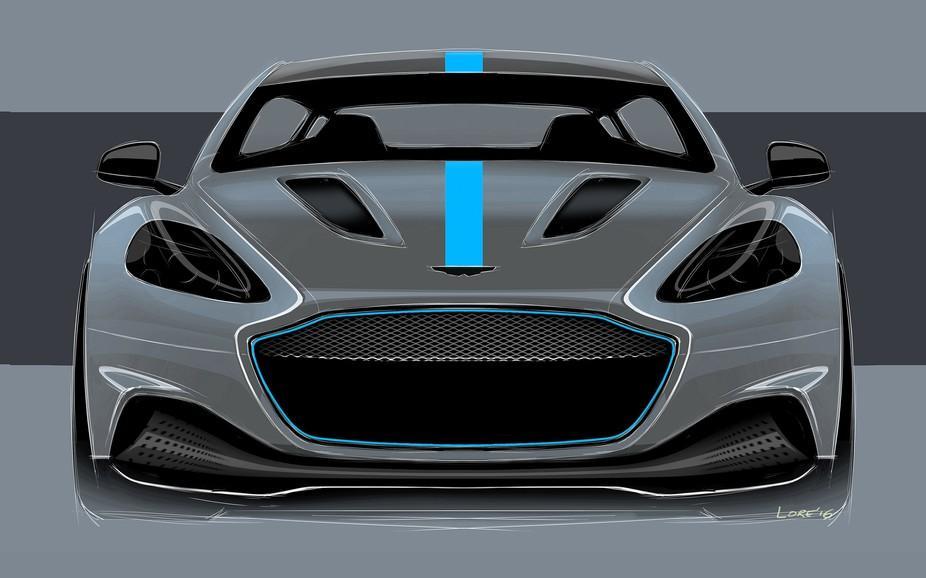Aston Martin: An unlikely ambassador for electric cars
Aston Martin has rarely been considered an eco-friendly brand, but it has announced an electric car of considerable heft

Aston Martin has historically been Britain’s number one stronghold of virile, automotive traditionalism, always offering vehicles with a robust core of well-proven, rather conventional technology, endorsed usually by characters such as James Bond and Jeremy Clarkson.
Aston Martins have always been the car for dyed-in-the-wool, old-school petrolheads.
As a result, you don’t automatically associate Aston Martin with eco-friendliness. So it came as a surprise to me when I heard about the new Aston Martin RapidE. That’s not a typing error of “Rapide”, Aston Martin’s existing, very handsome, four-door model.
The RapidE is based on the Rapide’s body and chassis, but with a big difference – it is a fully electric car. You read that right, Aston Martin is going where only the angelic and the well-meaning and responsible have so far gone.
Of course the brand is no stranger to innovation. No manufacturer could be if it wanted to stay alive in a world of swift technological advances.
But the brand’s general image tends toward the staid and predictable, focusing on front-engined, long-bonneted vehicles which easily fit the stereotype of the classic sports car as commonly portrayed in film as far back as the 1950s.
My first thought when I heard the news of a first electric car by Aston Martin was: “Have they no spine? Jumping on the trendy bandwagon of trying something electric to make sure the tofu faction is pleased?” As a lover of fast cars, my world lay in tatters. Aston Martin was my bastion of ‘the sports car as we know it’ which, to me, means anything James Bond might approve of.
That was until I read the performance data.
We are looking at a vehicle of considerable heft, capable of accelerating from 0-60mph in under three seconds. This is the kind of acceleration only the most ferocious of motorcycles used to be able to provide in the past. Unleashing this kind of power will be noticed by even the most speed-hardened passengers.
A step ahead
In short, this vehicle out-accelerates everything Aston Martin has built before. And that casts an entirely different light on its move into fully-electric vehicles.
It makes the move toward electrification absolutely logical and in line with company ideals of being among the fastest and finest, technologically speaking.

It proves that electric power is clearly a step ahead when it comes to topping the already impressive performance of past petrol models, which may well have reached the end of the rope regarding their capabilities – due to the fact that electric motors provide full torque from the get-go when the vehicle begins to move.
Conventional, combustion engine set-ups only reach optimal torque somewhere in the middle of their rev range. This wastes time during acceleration, which electric propulsion uses well instantly. And it means that electric cars will dash off in ghostly silence, rather than with the roaring and screaming drama of petrol engines. You could argue it is fittingly understated and dignified for a British elite car.
With the performance debate won hands down by electric power, where does the new vehicle leave us regarding the rest of Aston Martin’s image?
Can you still have hair on your chest and feel comfortable driving one of these cars, even though it does not give you a rumbling exhaust note and does not eat into Earth’s fossil fuel resources any more? Where is the wonderful mischief in all this that has traditionally made Aston Martin ownership so merrily bad-ass?
Clearly it’s time to relinquish the notion that only fossil fuel propulsion makes a “real man’s car”. After all, these are outmoded – not to mention sexist – ideals that we have been courting. If torque and horsepower have traditionally been the aspects that instilled the respect of dedicated hoons, well the Aston Martin RapidE outdoes its petrol-powered siblings with ease on both of these counts.
Let’s not forget, too, that electric power has been used in many powerful and stereotypically manly other things before: locomotives, submarines, power drills, 4x4 winches. There is a good helping of respectable macho pedigree stuff out there for the outmoded thinkers.
The only remaining question for me then is: how can we make the car louder?
Chris Ebbert is a senior lecturer in product design at Nottingham Trent University. This article was originally published on The Conversation (www.theconversation.com)
Join our commenting forum
Join thought-provoking conversations, follow other Independent readers and see their replies
Comments
Bookmark popover
Removed from bookmarks